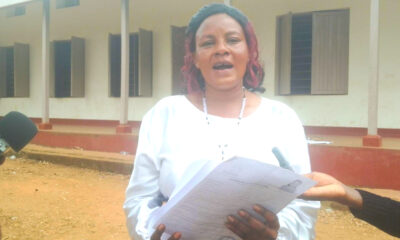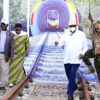Travel
Government Unveils National Plan to Combat Alarming Drowning Deaths
Government is finalising a comprehensive National Strategic Plan to reduce the country’s staggering drowning death toll, which claims over 3,000 lives each year, many of them children and youth in water-dependent communities.
The announcement was made by Charles Ruzigye, Assistant Commissioner for Administration in the Ministry of Works and Transport, during a joint press briefing in Kampala organized by the Ministry and Reach A Hand Uganda (RAHU) as part of the ongoing Drowning Prevention Week.
“Historically, drowning has been an ongoing problem in Uganda, yet it has been largely unrecognized as a big problem,” Ruzigye said. “Uganda cannot be left behind. We must act decisively, collaboratively, and urgently.”
The week-long campaign, which culminates on Friday with World Drowning Prevention Day, aims to galvanize national action and public awareness around what experts have described as a “silent public health crisis.”
Humphrey Nabimanya, CEO of Reach A Hand Uganda, painted a vivid picture of the human cost behind the statistics. “Drowning continues to claim lives, particularly among children and youth living in our lakeside and hard-to-reach communities that depend on water as a primary source of livelihood,” he said. “These lives are more than just statistics—they are real people with big dreams and untapped potential.”
He urged for community-led collaboration and proactive engagement with civil society groups to ensure lasting solutions. “We must act ahead to save future generations,” Nabimanya emphasized.
The draft National Strategic Plan outlines critical interventions such as the provision of flotation devices, skill-building programs in swimming and rescue, enhanced data collection, and the enforcement of water safety standards. It also emphasizes multi-sectoral collaboration and resource mobilization across government agencies, NGOs, and the private sector.
“As a program, we cannot do any implementation without any resources,” Ruzigye noted, confirming that the draft plan is in its final stages and will soon be officially launched.
In addition to the strategic plan, the government is developing National Water Safety Plans, setting up search and rescue centers in drowning hotspots like Panyimur, Kaisotonya, and Lake Kyoga, and crafting new regulations to govern water safety. Media engagement and public education are also being prioritized.
“We need to significantly increase public awareness of this problem,” Ruzigye stressed. “This issue is parabolic—it cuts across water transport, sports, recreation, and even emergency services. It cannot be handled by one government agency alone.”
Recent research by Makerere University’s School of Public Health has been instrumental in shaping policy. Dr. Frederick Oporia, Executive Director of the Trauma and Injury Control Centre, warned that drowning is now among the top three causes of death in Sub-Saharan Africa—on par with HIV/AIDS, COVID-19, and malaria.
“By the end of each day, at least eight people will have drowned in Uganda,” Oporia stated. “This is no longer a peripheral issue—it is central to our public health and safety agenda.”
Charles Onyum Okao, Media Coordinator for the Global Health Advocacy Incubator (GHAI) Drowning Prevention and Data for Health Programs in Uganda, highlighted data gaps and cultural misconceptions that often undermine preventive efforts. “Drowning is a silent killer. There’s no scream, no splash—just a quiet, solitary struggle,” he said.
Okao called on stakeholders to invest in life-saving actions, including affordable safety gear and widespread swimming and rescue training. “We need to equip communities with the knowledge and tools to protect their own. This is a national emergency that demands national unity.”
As Uganda moves toward finalizing its strategic roadmap, officials and partners alike hope the effort will finally bring widespread recognition—and solutions—to a long-ignored crisis claiming thousands of lives every year.
Comments



























